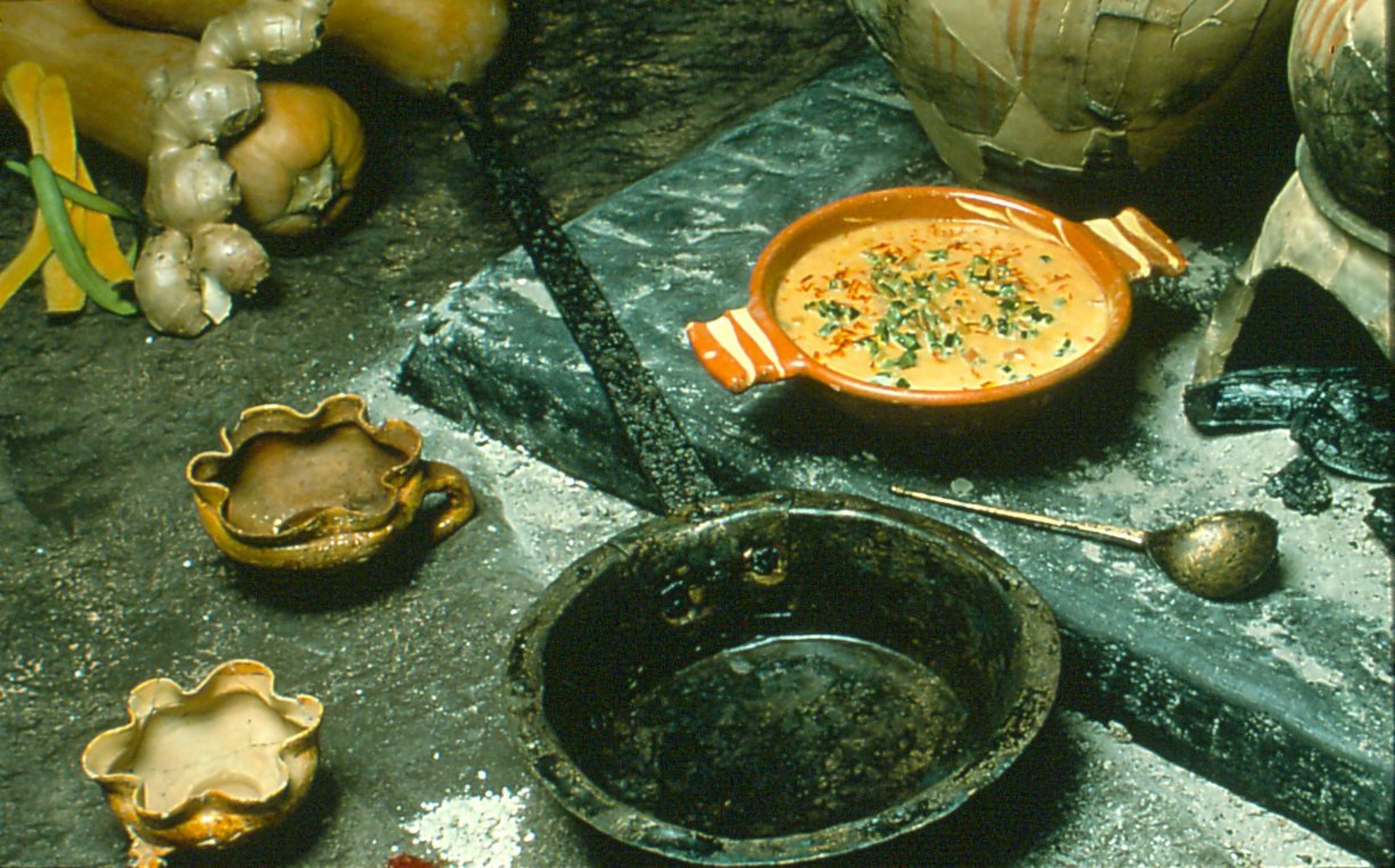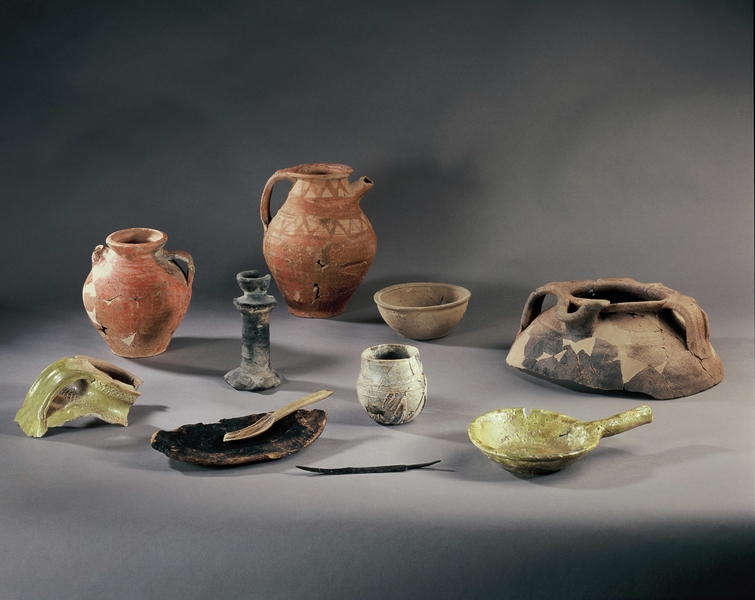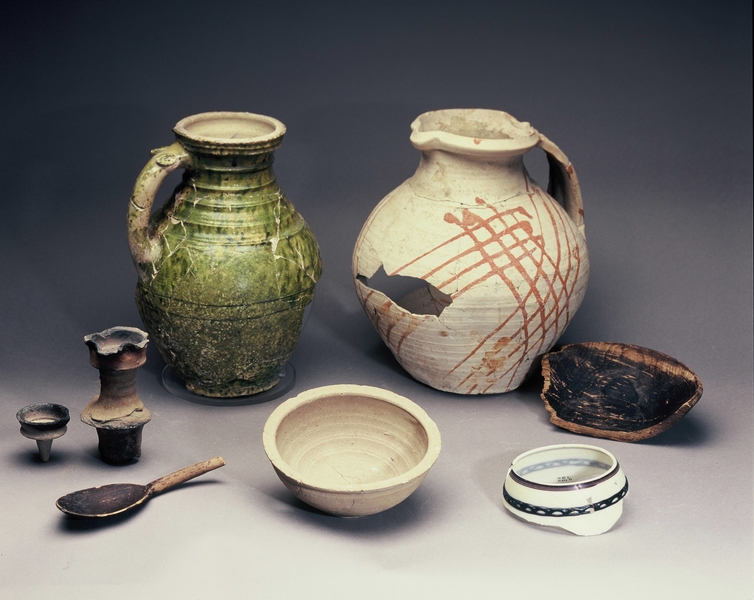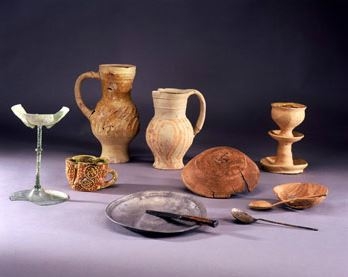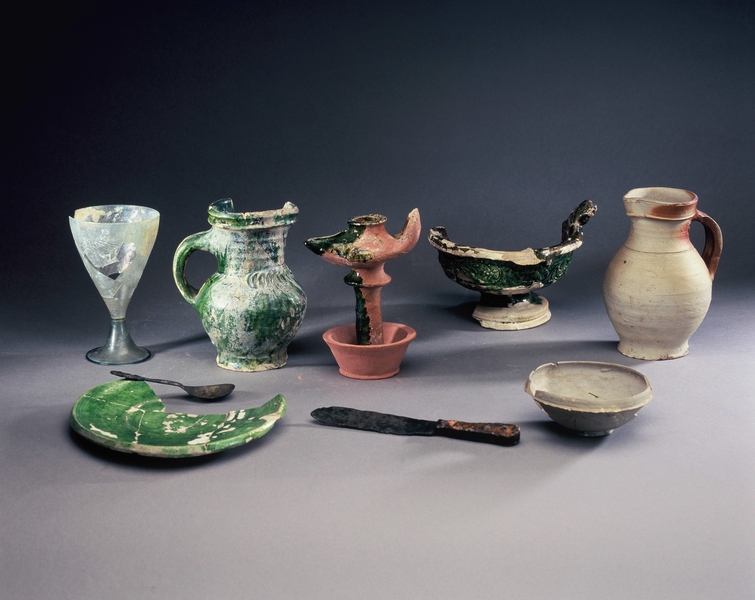- Home
- Crafts and daily life
- From the market to the table
Archaeology offers us various ways to explore eating habits in the past. These include the identification of food remains, such as animal bones (archeozoology) and fruit and vegetable seeds and pits (paleocarpology), as well as the study of the recipients and utensils used for the storage, preparation and consumption of foodstuffs. For historical periods, the use of written and iconographic sources can allow us to recreate more accurately a table setting or establish a recipe, for example.
In Saint-Denis, these research themes have not all been the object of extensive scientific study, which would allow archaeologists to both synthesize their findings and communicate them to the general public. Based on a section of pieces that are complete enough to be meaningful, we offer five sets of table utensils, ranging in time from the Carolingian period to the sixteenth century.
Carolingian period
Several pieces grouped here are luxurious and denote a certain quality of life on the site: glass tumbler decorated with applied nets, tubular jugs with painted and polished decoration, containers with early lead glaze, like a jug and a skillet ( probably used as a water sink).
Although they are poorly preserved, wooden bowls are more common than ceramic bowls. The jug with three handles and trefoil spout has a large capacity, between 10 and 12 liters. It is a common pottery, granular paste, used to transport liquids from the tank or well to the table. Iron knife, wooden spoon decorated with ocelli and ceramic lamp, with tallow or oil, indispensable in dark interiors complete this picture.
11th-12th centuries
The lead glaze pitcher, with a round-section handle, replaces the tubular-nosed jug. The jug with spout stretched and pinched has a thin wall that breaks with the granular paste of the previous common potteries. Little change in bowls and spoons. The globular globular glass goblet is still in vogue, but only an import piece is presented, as the archaeological glassware of this era is altered. Around the year 1000 appears an appendage lamp that is used stuck in a support of wood or metal or simply held in hand.
13th century
A morphological renewal marks the glassware: here, no more cup, but a stemmed glass with a ribbed belly. The drinking pitcher becomes the perfect tableware. With a globular or pear-shaped body, it can accommodate decorations that reflect the ornamental skills of the potters of the time, such as this pitcher decorated with birds. The poly-lobed cup is frequent between the 13th and 15th centuries. However, its function remains enigmatic: is it a candlestick, a wine tasting, a condiment cup? As for the exceptional ceramic barrel, it could serve as a gourd as being placed on a table. Poured and pinched jar, lamp, bowl and wooden spoon differ little from previous periods.
14th century
The evolution of the glass to drink is sensitive: the stocky foot becomes stem, the belly opens, flares in finely ribbed cut. From this period is the only tin chopper discovered in Saint-Denis. Usually in bread or wood, it serves as a plate.
The bowls, turned in green wood, often split during or after conservative treatment. Some funds still present, branded with iron, the mark of the artisan, or the owner.
At that time, wooden spoons, carved spoon and turned handle, imitate the shape and finesse of metal parts, here a spoon cuprous alloy.
Drinking jugs have become common containers: their glaze is partial and their decor is not very neat. However, the exceptional pottery is always made like this four-lobed cup adorned with clear slip patterns on red slip. Cruches and jug retain the same physiognomy, but the floor lamp adopts a globular reservoir. Iron knives have handles made of bone or wood.
16th century
Stoneware bowl and pitcher - watertight and easy to maintain - plate and stove with lead glaze - or "plommures" - attest to the place that the pottery craftsmanship of Beauvaisis at this time. Despite this strong competition, potters in the Paris region continue to produce.
They make mostly dark green glaze containers on red slip like this jug and this floor lamp. The drinking glass adopts a cup and a conical shaped foot and the only knife spotted for this period is bone-handled iron.
Some medieval vessels related to the preparation, cooking and preservation of food: bowls, pans, knife and stone mortar; bronze tripod cauldron and cooking pottery: coquemar and its lid, drip tray and terrines.
